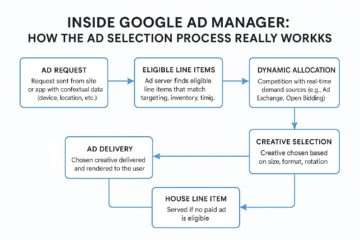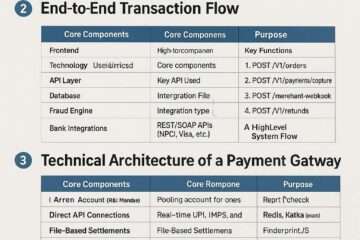

Connected TV (CTV) programmatic advertising has transformed the way brands reach audiences, combining the precision of digital advertising with the immersive experience of television. As this space continues to evolve, advertisers, publishers, and marketers have numerous questions about its mechanics, benefits, challenges, and future. Below is a comprehensive article addressing the top 200 questions related to CTV programmatic advertising, organized into key categories for clarity and depth.
Table of Contents
- Introduction to CTV Programmatic Advertising
- Technology and Infrastructure
- Targeting and Data
- Ad Formats and Creative
- Measurement and Attribution
- Monetization and Revenue
- Challenges and Limitations
- Trends and Future Outlook
- Regulatory and Privacy Concerns
- Miscellaneous
1. Introduction to CTV Programmatic Advertising
What is CTV programmatic advertising?
CTV programmatic advertising refers to the automated buying and selling of ad inventory on connected TV platforms using data-driven technology, typically through real-time bidding (RTB) or programmatic direct deals.
How does CTV differ from traditional TV advertising?
Unlike traditional TV, CTV delivers ads via internet-connected devices, enabling precise targeting, real-time optimization, and measurable outcomes.
What are the key benefits of CTV programmatic advertising?
Benefits include enhanced targeting, cost efficiency, scalability, real-time analytics, and the ability to reach cord-cutters on streaming platforms.
Who are the main stakeholders in CTV programmatic advertising?
Stakeholders include advertisers, publishers, demand-side platforms (DSPs), supply-side platforms (SSPs), data providers, and ad tech vendors.
What devices qualify as CTV?
CTV devices include smart TVs, streaming media players (e.g., Roku, Amazon Fire TV), gaming consoles, and other internet-connected devices used to stream content on TVs.
How has the growth of streaming platforms impacted CTV advertising?
The rise of platforms like Netflix, Hulu, and Disney+ has increased CTV ad opportunities, attracting advertisers to streaming audiences.
What is the difference between CTV and OTT advertising?
CTV refers to ads delivered on TV screens via internet-connected devices, while OTT (over-the-top) encompasses streaming content across all devices, including mobile and desktop.
Why is programmatic CTV advertising gaining popularity?
Its popularity stems from precise audience targeting, automation, and the ability to reach fragmented streaming audiences.
What are the main programmatic buying models for CTV?
Models include real-time bidding (RTB), private marketplaces (PMPs), programmatic direct, and preferred deals.
How does CTV fit into the broader digital advertising ecosystem?
CTV bridges digital and traditional media, offering digital-like targeting with TV’s premium, large-screen experience.
2. Technology and Infrastructure
What technologies power CTV programmatic advertising?
Key technologies include DSPs, SSPs, ad servers, data management platforms (DMPs), and dynamic ad insertion (DAI) systems.
What is a DSP in the context of CTV advertising?
A demand-side platform (DSP) is software that allows advertisers to buy CTV ad inventory programmatically across multiple sources.
What is an SSP and its role in CTV?
A supply-side platform (SSP) enables publishers to manage and sell their CTV ad inventory to advertisers via programmatic channels.
What is dynamic ad insertion (DAI)?
DAI is a technology that inserts personalized ads into streaming content in real time, ensuring relevance and seamlessness.
How does real-time bidding (RTB) work in CTV?
RTB involves advertisers bidding= bidding on ad impressions in real time through automated auctions, enabling efficient pricing and targeting.
What is a private marketplace (PMP)?
A PMP is a curated, invitation-only programmatic auction where publishers offer premium CTV inventory to select advertisers.
What role do ad servers play in CTV advertising?
Ad servers deliver, track, and optimize CTV ads, ensuring accurate placement and performance reporting.
How do content delivery networks (CDNs) impact CTV ad delivery?
CDNs ensure low-latency, high-quality streaming of CTV ads by distributing content across global servers.
What is server-side ad insertion (SSAI)?
SSAI stitches ads into the video stream on the server side, creating a seamless viewing experience without buffering.
How do APIs facilitate CTV programmatic advertising?
APIs enable integration between platforms (e.g., DSPs, SSPs, and publishers) for automated inventory management and data exchange.
3. Targeting and Data
How is audience targeting done in CTV programmatic advertising?
Targeting leverages first-party, third-party, and contextual data to deliver ads to specific demographics, behaviors, or interests.
What is first-party data in CTV advertising?
First-party data is user information collected directly by advertisers or publishers, such as viewing habits or subscription details.
What is third-party data, and how is it used?
Third-party data, sourced from external providers, enhances targeting by adding demographic, behavioral, or intent-based insights.
How does contextual targeting work in CTV?
Contextual targeting matches ads to the content genre, show type, or viewing environment (e.g., sports or drama).
What is lookalike modeling in CTV advertising?
Lookalike modeling identifies new audiences with similar characteristics to existing high-value customers using data algorithms.
How is geolocation targeting used in CTV?
Geolocation targeting delivers ads based on a user’s geographic location, such as city or ZIP code.
What role does behavioral targeting play?
Behavioral targeting uses viewing patterns, search history, or app usage to deliver relevant ads.
How do advertisers use household-level targeting?
Household-level targeting identifies and targets specific households based on IP addresses or device IDs.
What is cross-device targeting in CTV?
Cross-device targeting syncs ad delivery across a user’s CTV, mobile, and desktop devices for a cohesive campaign.
How does retargeting work in CTV advertising?
Retargeting serves ads to users who previously interacted with a brand, such as visiting a website or app.
4. Ad Formats and Creative
What are the main CTV ad formats?
Common formats include pre-roll, mid-roll, post-roll, interactive ads, shoppable ads, and banner overlays.
What is a pre-roll ad?
A pre-roll ad plays before the main content begins, typically 15-30 seconds long.
How do mid-roll ads differ from pre-roll ads?
Mid-roll ads appear during content, often at natural breaks, mimicking traditional TV commercial breaks.
What are interactive CTV ads?
Interactive ads engage viewers with features like QR codes, polls, or clickable calls-to-action.
What are shoppable ads in CTV?
Shoppable ads allow viewers to purchase products directly from the ad, often via QR codes or second-screen integration.
How are banner ads used in CTV?
Banner ads display static or dynamic visuals alongside content, often in menus or pause screens.
What is a branded content ad?
Branded content ads integrate a brand’s message into custom or sponsored programming for a native feel.
How long should CTV ads be?
Typical lengths are 15, 30, or 60 seconds, balancing engagement with viewer retention.
What is ad podding in CTV?
Ad podding groups multiple ads into a single break, similar to traditional TV ad breaks.
How do creative best practices differ for CTV vs. mobile?
CTV creatives prioritize high-quality visuals, concise messaging, and TV-like storytelling due to the lean-back viewing experience.
5. Measurement and Attribution
How is CTV ad performance measured?
Performance is measured via impressions, viewability, completion rates, click-through rates (CTR), and conversions.
What is viewability in CTV advertising?
Viewability measures whether an ad was fully visible and played to completion.
How is attribution tracked in CTV campaigns?
Attribution tracks user actions (e.g., purchases or sign-ups) back to specific CTV ad exposures.
What is a view-through rate (VTR)?
VTR measures the percentage of viewers who watched an ad to completion.
How do advertisers measure brand lift in CTV?
Brand lift is measured through surveys or analytics tracking changes in awareness, consideration, or preference post-campaign.
What is cross-channel attribution in CTV?
Cross-channel attribution links CTV ad exposure to actions across other channels, like mobile or web.
How is incremental reach calculated?
Incremental reach measures unique viewers reached by CTV ads that weren’t exposed to other campaign channels.
What role do clean rooms play in CTV measurement?
Data clean rooms enable secure, privacy-compliant data matching for attribution and targeting.
How is frequency capping used in CTV?
Frequency capping limits how often a user sees the same ad to avoid overexposure.
What are the challenges in CTV attribution?
Challenges include fragmented data, cross-device tracking, and privacy restrictions.
6. Monetization and Revenue
How do publishers monetize CTV inventory?
Publishers monetize through programmatic auctions, direct deals, or subscription-based ad-supported models.
What is the average CPM for CTV ads?
CPMs (cost per mille) for CTV typically range from $20-$50, depending on targeting and inventory quality.
How do programmatic direct deals work?
Programmatic direct deals involve pre-negotiated terms between advertisers and publishers, executed programmatically.
What is a revenue share model in CTV?
A revenue share model splits ad revenue between publishers and platforms based on agreed percentages.
How do ad-supported streaming platforms generate revenue?
They generate revenue through ad sales, subscriptions, or hybrid models combining both.
What is yield optimization in CTV?
Yield optimization maximizes ad revenue by dynamically adjusting inventory pricing and fill rates.
How do SSPs influence publisher revenue?
SSPs connect publishers to multiple buyers, increasing competition and driving higher CPMs.
What is header bidding for CTV?
Header bidding allows publishers to auction inventory to multiple DSPs simultaneously, boosting revenue.
How do advertisers optimize ad spend in CTV?
Advertisers optimize spend through precise targeting, frequency capping, and performance-based bidding.
What are the financial risks of CTV programmatic advertising?
Risks include ad fraud, low fill rates, and fluctuating CPMs due to market dynamics.
7. Challenges and Limitations
What is ad fraud in CTV advertising?
Ad fraud involves fake impressions or clicks, often from bots or spoofed devices.
How prevalent is ad fraud in CTV?
Fraud is a growing concern, with estimates suggesting 15-20% of CTV impressions may be fraudulent.
What is inventory fragmentation in CTV?
Fragmentation occurs when ad inventory is spread across multiple platforms, complicating scale and targeting.
How does latency affect CTV ad delivery?
Latency can cause buffering or ad skips, reducing viewability and effectiveness.
What are the challenges of cross-platform measurement?
Cross-platform measurement struggles with inconsistent metrics, data silos, and device ID mismatches.
How do walled gardens impact CTV advertising?
Walled gardens (e.g., Amazon, Roku) limit data access and transparency, restricting advertiser control.
What is ad skipping, and how does it affect campaigns?
Ad skipping occurs when viewers bypass ads, lowering completion rates and ROI.
How do supply path optimization (SPO) challenges arise?
SPO challenges include navigating complex supply chains and identifying trustworthy partners.
What are the scalability issues in CTV programmatic?
Scalability is limited by premium inventory shortages and platform-specific restrictions.
How do technical glitches impact CTV ad delivery?
Glitches like ad misfires or buffering disrupt viewer experience and campaign performance.
8. Trends and Future Outlook
What is the future of CTV programmatic advertising?
The future includes greater automation, AI-driven targeting, and increased ad-supported streaming adoption.
How will AI impact CTV advertising?
AI will enhance targeting, creative optimization, and real-time bidding efficiency.
What role will 5G play in CTV advertising?
5G will improve streaming quality and enable more interactive, data-heavy ad formats.
How is shoppable TV evolving?
Shoppable TV is growing with QR codes, second-screen integrations, and direct-purchase capabilities.
What is the impact of ad-supported tiers on CTV?
Ad-supported tiers on platforms like Netflix are expanding inventory and attracting budget-conscious viewers.
How will programmatic CTV evolve in live sports?
Live sports will see increased programmatic buying due to high engagement and premium audiences.
What is the role of immersive ads in CTV?
Immersive ads, like 360-degree or AR experiences, will enhance engagement on CTV.
How will CTV advertising adapt to cord-cutting trends?
CTV will capture more ad dollars as cord-cutting shifts audiences to streaming platforms.
What is the potential of gamified CTV ads?
Gamified ads will engage viewers through interactive challenges or rewards, boosting retention.
How will global markets influence CTV growth?
Emerging markets will drive CTV growth as smart TV adoption and internet access expand.
9. Regulatory and Privacy Concerns
How does GDPR impact CTV advertising?
GDPR restricts data collection and targeting in the EU, requiring user consent and transparency.
What is the impact of CCPA on CTV?
CCPA gives California residents control over their data, affecting targeting and measurement.
How do privacy laws affect CTV data usage?
Privacy laws limit third-party data and require anonymized or consent-based targeting.
What is the role of IAB in CTV advertising?
The IAB sets standards for ad formats, measurement, and privacy compliance in CTV.
How do advertisers ensure COPPA compliance in CTV?
COPPA compliance involves restricting data collection from children under 13 and using kid-safe ad content.
What is device fingerprinting, and why is it controversial?
Device fingerprinting identifies users via device data, raising privacy concerns due to lack of consent.
How do ad blockers affect CTV advertising?
Ad blockers are less prevalent in CTV but can disrupt delivery on browser-based streaming.
What is the impact of Apple’s ATT framework on CTV?
Apple’s App Tracking Transparency (ATT) limits cross-app tracking, affecting CTV apps on iOS.
How do advertisers handle data security in CTV?
Advertisers use encryption, secure APIs, and data clean rooms to protect user information.
What are the ethical concerns in CTV advertising?
Ethical concerns include invasive targeting, lack of transparency, and potential exploitation of viewer data.
10. Miscellaneous
How do CTV ads differ for B2B vs. B2C campaigns?
B2B CTV ads focus on niche, professional audiences, while B2C targets broader consumer segments.
What is the role of agencies in CTV programmatic?
Agencies manage strategy, buying, and optimization, bridging advertisers and platforms.
How do small businesses use CTV advertising?
Small businesses leverage self-serve DSPs and localized targeting for cost-effective CTV campaigns.
What is the impact of CTV on political advertising?
CTV enables precise voter targeting but raises concerns about misinformation and transparency.
How do advertisers test CTV campaigns?
A/B testing, geo-based pilots, and creative variations help optimize CTV performance.
What is the role of influencers in CTV advertising?
Influencers create branded content or endorsements for CTV, boosting authenticity.
How does seasonality affect CTV ad spend?
Seasonal events like holidays or sports drive higher CPMs and inventory demand.
What is the role of CTV in nonprofit advertising?
Nonprofits use CTV for awareness campaigns, leveraging emotional storytelling and targeted reach.
How do advertisers measure CTV ROI?
ROI is measured by comparing campaign costs to conversions, brand lift, or sales uplift.
What are the best platforms for CTV programmatic advertising?
Top platforms include The Trade Desk, Roku, Amazon Ads, Google DV360, and Magnite.
Conclusion
CTV programmatic advertising is a dynamic and rapidly growing field, offering unparalleled opportunities for brands to connect with engaged audiences. By addressing these 200 questions, this article provides a comprehensive guide to understanding its mechanics, opportunities, and challenges. As technology advances and viewer habits evolve, staying informed about CTV trends, privacy regulations, and measurement innovations will be critical for success in this space.
For further exploration, advertisers can leverage platforms like The Trade Desk, explore IAB guidelines, or consult with specialized ad tech vendors to stay ahead in the CTV programmatic ecosystem.




























































